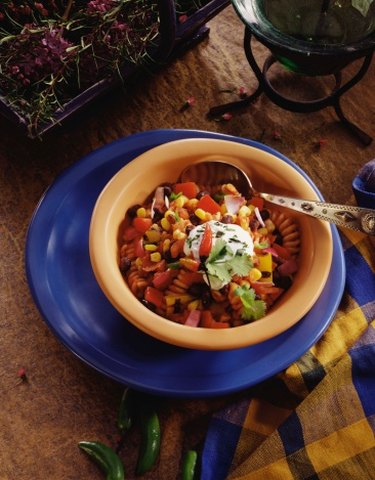Things You'll Need
Dairy products (cheese, sour cream)
Citrus (lime, pineapple)
Avocado

Getting a little heavy-handed with the hot peppers or chili powder can lead to a chili that tips the heat scale from deliciously fiery to alarmingly unpalatable. Fortunately, a few tricks of the trade can tame the fire in the pot so you don't have to start from scratch. It's always best to start with a small amount of powder or fresh pepper in your chili and cook it for at least 20 minutes before tasting and adding more to allow time for the seasoning to absorb into the meat and beans.
Step 1
Serve the chili with healthy dollops of sour cream and cheddar cheese. The chemical compounds that make peppers hot absorb more readily into fats, acids or sugars. Milk is the best tamer of heat for spicy hot foods, but dairy products that are more chili-friendly work best. The fats in avocados can also help absorb heat, so serve the bowl with a few slices or make a non-spicy guacamole to put on top.
Video of the Day
Step 2
Stir in a little citrus. The acid and sweetness in fruits such as pineapple, orange, lemon and lime will help bring down the heat scale of a super hot chili. Using these types of flavors will also change the flavor of your food considerably if used in excess, so as with the peppers, start with small amounts and increase gradually.
Step 3
Dilute the mixture. Add more beans, meat and other ingredients to dissipate the chili's heat. This may result in more chili than you were prepared to deal with, so get ready to freeze some for the next gathering.
Step 4
Know your chilies. When putting together the ingredients for your next batch of chili, do some research on what to expect from the peppers. All chilies are rated on the Scoville scale for heat. For example, a bell pepper rates zero on the scale, a poblano rates at 1,000 units, while a jalapeno comes in between 2,500 and 8,000 Scoville units. Commercially available peppers can jump significantly on the heat scale, so take care when using a pepper you're not familiar with.
Video of the Day